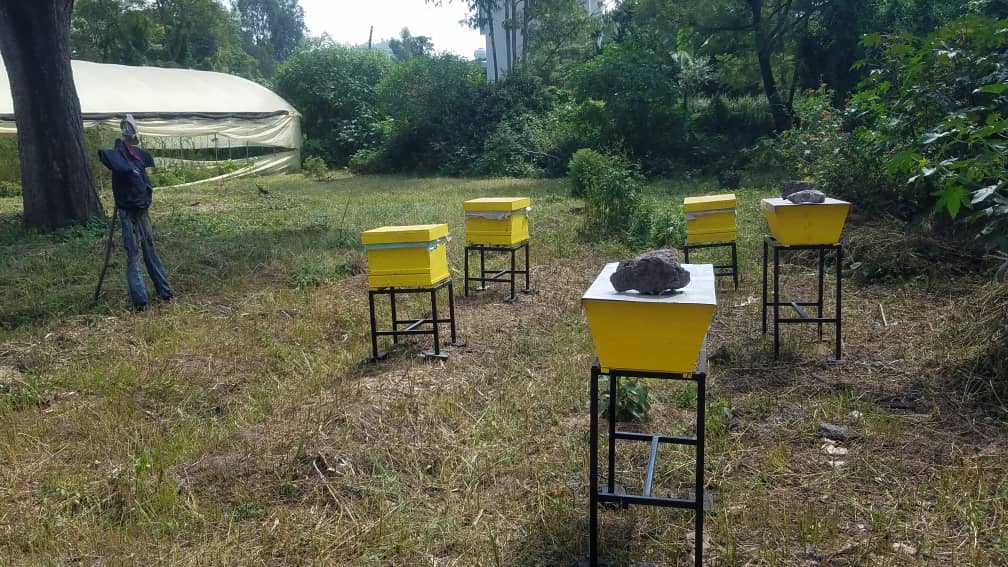3 November 2020
We have officially launched the bee project! With five new hives set up in the college garden, our students will be able to learn modern beekeeping. This project aims to diversify our students’ knowledge and optimise the harvests in the garden through pollination.

Why include beekeeping in the organic-farming training?
The bee project was initiated by Andreas Wigger, who is a keen beekeeper himself. He developed the idea to encourage our students to think outside of the box with the potential of a brand-new means of supply. Indeed, the students will learn how to extract, process and sell a variety of bee products enhancing their prospects for better income.
Beekeeping is complementary with organic farming through the pollination of flowering plants. Students will learn the importance of biodiversity and how they can benefit from the positive input bees bring to farming, including a more fruitful harvest.
The making of wax foundations
Once the hives were installed in the garden, a few steps were necessary before installing the bee colonies. The first was the making of wax foundations.
The honeybees produce the basic material for their narrow dwellings and storerooms, themselves. They need that to rear their brood and for storing honey, pollen, propolis and water. They produce wax for this reason.
The worker bees in the colony produce wax in their wax glands. These are specialised skin glands located on the abdominal side of the abdomen. Freshly produced wax is snow white, turning light yellow to dark yellow progressively. The yellow colour comes from propolis dyes or pollen dyes.
If you put a swarm of bees in an empty hive without frames and combs, they will build their own combs if they are fed properly. However, these combs will be irregular in sizes and form, thus making it difficult for the beekeeper to extract the honey from them.
In modern beekeeping, the beekeeper makes the wax foundations, thus making it easier for the bees to build the combs. These wax foundations are molded with a uniform hexagonal pattern giving the bees a base from which they can draw out a comb. Apart from the advantage of mobility, the beekeeper gets more regular honeycombs that are more stable due to the wire of the frames.
How are these wax foundations built?
In the video above, you can see our Ethiopian team preparing the wax foundations:
- The liquid wax, heated to 80 degrees Celsius, is poured into the open mould with a ladle.
- The mould is then closed and the middle wall is pressed, any exess wax flows out of the mould at the front into a collecting container with water. The pressing process takes about 30 seconds.
- These wax foundations are then placed on the frames and fixed with the help of the wires.